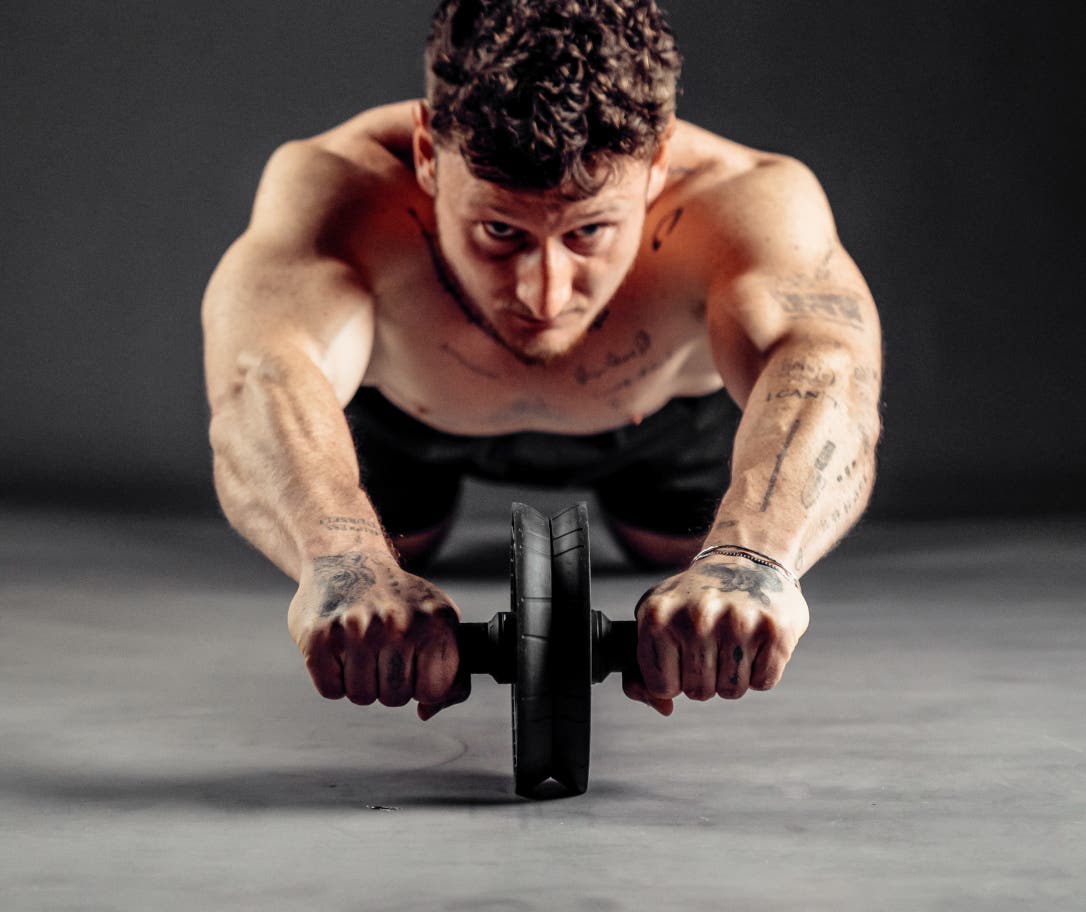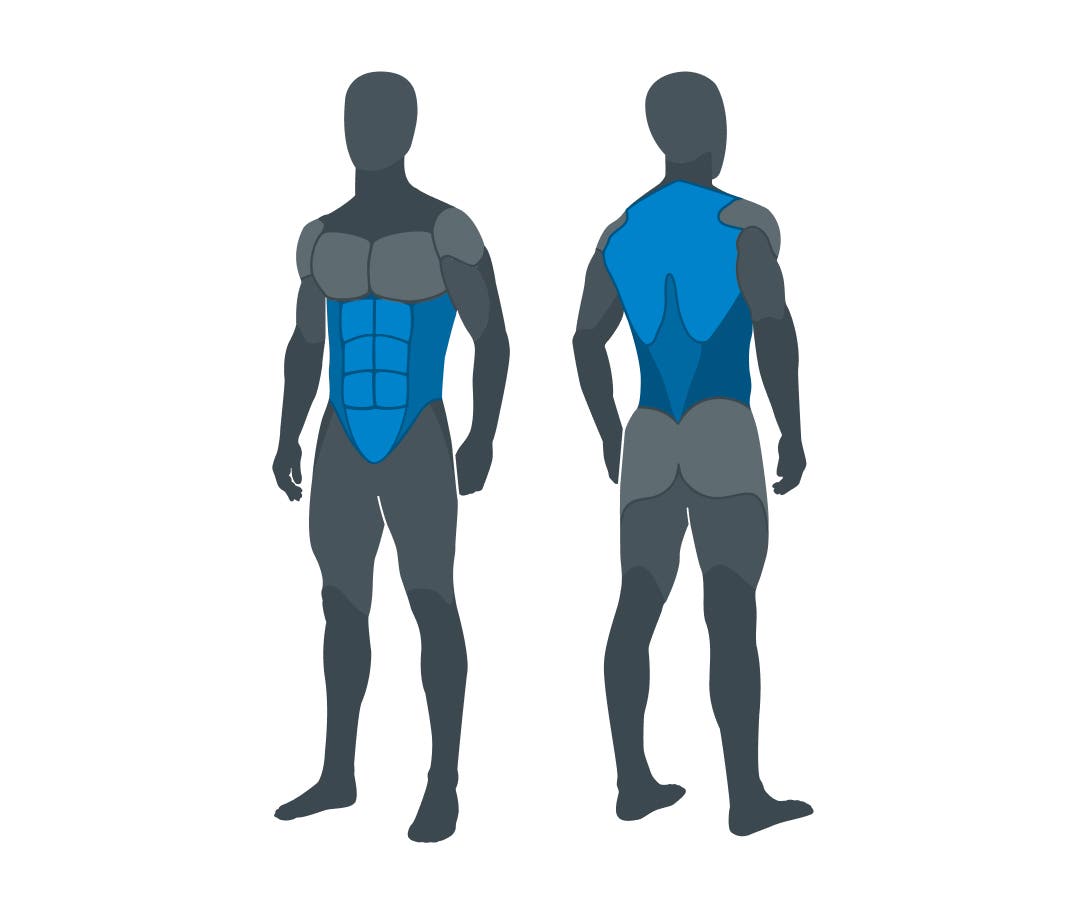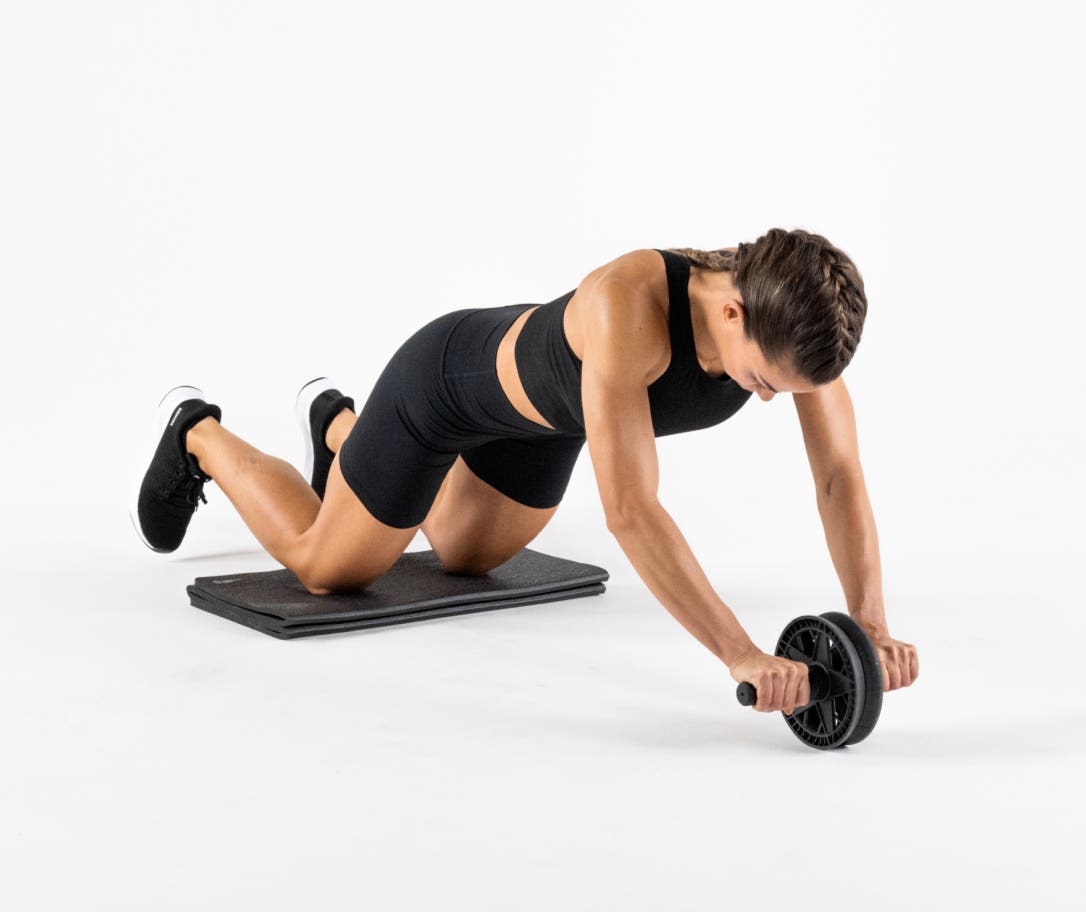The ab wheel is a small yet powerful device that offers a dynamic way to engage not only the abdominals but also various other muscle groups.
Whether you're an athlete looking to improve your performance or someone aiming to strengthen your core for better posture and daily function,1 incorporating the ab roller into your training routine can yield noticeable benefits.
What is an ab wheel?
An ab wheel is a small, lightweight fitness device consisting of a wheel with two handles on either side. Its primary function is to engage the core muscles, particularly during a rolling motion where you extend your body forward and then return to a kneeling position.

Muscles targeted
The ab wheel primarily targets the following muscle groups:
- Rectus abdominis: This is the "six-pack" muscle, responsible for flexing the spine and crunching the torso.
- Obliques: The muscles located on the sides of the abdomen, which help with rotation and lateral flexion.
- Transverse abdominis: A deep core muscle that stabilizes the pelvis and spine, aiding in posture and balance.
- Erector spinae: The muscles along the spine that support the back and assist with extension and posture.
- Hip flexors and lat muscles: Though most of the back muscles aren’t directly targeted, these muscles are engaged to stabilize the body as the wheel is rolled out and pulled back in.
The most active shoulder muscle here is the lat muscle, which helps pull the arm back in.

Benefits of using an ab wheel
Incorporating the ab wheel into your routine provides several key benefits that can improve overall athletic performance.
1. Strength: The ab wheel is one of the most effective tools for strengthening the core muscles. By requiring constant engagement and stabilization of the abdominals, the ab wheel promotes muscle growth in the deep core muscles that are often neglected in traditional exercises.2
2. Stability: In addition to strengthening the abdominals, the ab wheel helps to improve stability in the trunk and lower back, as well as your shoulders. As you roll forward and back, you must engage the deep stabilizing muscles to maintain proper form, making this a functional exercise that enhances your balance and coordination.
3. Ab wheel vs. traditional ab exercises: While Crunches and Situps focus primarily on the rectus abdominis, the ab wheel works the entire core, including the deep stabilizing muscles. This makes the ab wheel more effective at promoting overall strength, flexibility, and stability compared to traditional abdominal exercises.
Drawbacks of an ab wheel
While the ab wheel is an excellent tool for core strength, it does come with a few potential drawbacks:
- Risk of improper form: Without proper technique, it’s easy to strain the lower back or other parts of the body. This is especially true if you don't engage your core throughout the movement, leading to hyperextension of the spine.
- Some core strength required: If you're new to core exercises, it may be difficult to perform the ab wheel correctly without first developing some basic core strength and stability like the Hollow Hold.
- Potential strain on the wrists and shoulders: For those with existing joint issues or mobility restrictions in the wrists and shoulders, using the ab wheel could be uncomfortable or lead to a strain.
Who can benefit from adding an ab wheel to their routine?
- Athletes: A strong core is crucial for almost every sport, whether it's running, swimming, football, or weightlifting. By incorporating the ab wheel into their core workouts, athletes can enhance their performance through better balance, power, and rotational strength.
- Injury prevention: A well-developed core helps prevent injuries by stabilizing the spine and reducing the risk of lower back pain. By strengthening core muscles with the ab wheel, you can improve posture, prevent imbalances, and maintain proper alignment in both movement and static positions.
- Daily life: Even for those not involved in athletics, having a strong core aids in maintaining good posture, supporting the spine, and carrying out everyday tasks, such as lifting, bending, and sitting for long periods.
How to set up your ab wheel and use it safely
To ensure you are using the ab wheel correctly and safely, follow these step-by-step instructions:
- Get into position: Start by kneeling on a comfortable surface, such as a mat. Grip the handles of the ab wheel with both hands, ensuring that your wrists are straight and your body is aligned in a neutral position.
- Engage your core: Before beginning the movement, engage your core muscles by pulling your belly button up towards your spine.
- Start with control: Focus on slow, controlled movements instead of speed or a high number of reps. Quality repetitions will build strength and keep your lower back protected.
- Roll the wheel forward: Slowly roll the ab wheel forward, keeping your head, shoulders, and hips in a straight line. As you roll out, ensure your hips do not sag or rise up, and keep your arms straight.
- Return to the starting position: Once you have reached a point where you feel a stretch in your core, reverse the movement by engaging your abdominal muscles and pulling the wheel back toward your knees. Make sure to keep body weight on the wheel at all times. You can ensure this by lifting your knees off the ground slightly between reps.
- Rest and repeat: Perform the exercise for 5-10 repetitions for three rounds. Take a 30-60-second rest between sets to allow your muscles to recover.
- Listen to your body: If you feel strain in your lower back, reduce the range of motion or take a longer rest. It can help to perform the roll-out against a wall or make a small mark on the floor to measure your controlled range of motion.

Let’s recap
The ab wheel may be simple, but it’s also incredibly effective. And the benefits go beyond strengthening your core – improving stability and improving overall athletic performance.
By practicing proper form, progressing gradually, and using it consistently, you’ll develop a stronger, more stable core that supports injury prevention and improves functional movement both in and outside the gym.
Sources
[1] McGill, S. M. (2007). Low back disorders: Evidence-based prevention and rehabilitation. Human Kinetics.
[2] Schick, E. E., & Whitehurst, M. (2015). The effects of core stabilization training on balance and strength. Journal of Strength and Conditioning Research, 29(9), 2554-2560.